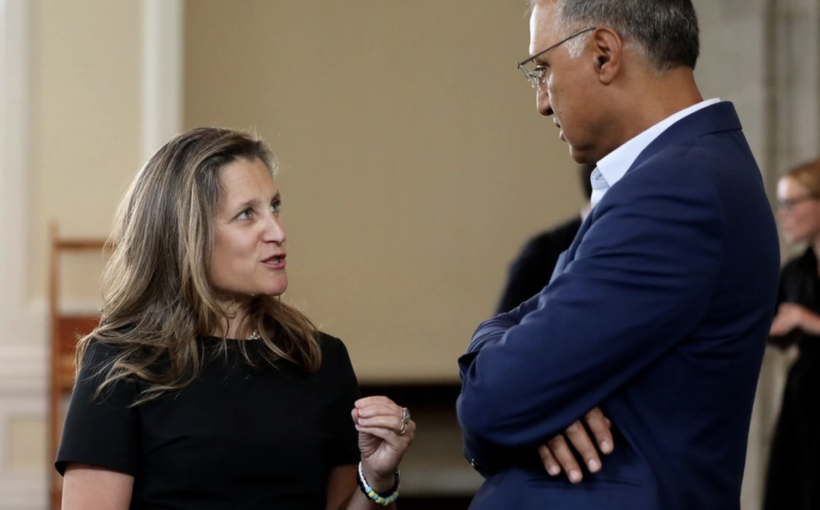Alberta is seeking $707 million under the federal program for fiscal year 2020-21 while Ottawa calculates Alberta should receive $577 million
The disagreement is outlined in a Feb. 21 briefing note from then-deputy finance minister Michael Sabia to federal Finance Minister and Deputy Prime Minister Chrystia Freeland. The note is marked as “secret” and was obtained by Postmedia via an access to information request.
It sets out how the two governments disagree over how much Alberta should receive in FSP payments, a federal support program for provinces that experience year-over-year revenue declines “resulting from extraordinary economic downturns.”
Ahead of last September’s deadline, Alberta applied for $707 million in FSP payments for the 2020-21 fiscal year, which was included in the province’s 2023 budget. Ottawa’s calculations would give the province $577 million.
The note is signed by Freeland endorsing the lower value, and the documents include a three-paragraph draft letter from her to then-Alberta finance minister Travis Toews indicating the federal government’s decision.
A summary of Ottawa’s calculations is included in the pages, but details on Alberta’s tabulations are not.
The office of current Alberta Finance Minister Nate Horner stated the ministry had anticipated getting credit for the Accelerated Capital Cost Allowance and the non-indexation of the personal income tax system, but was denied.
“Alberta continues to call for fundamental reforms to the Fiscal Stabilization Program to ensure the program benefits all Canadians,” reads a statement from his office.
“This final determination was made based on the Fiscal Stabilization program’s parameters, as set out in the Federal Provincial Fiscal Arrangements Act, which is subject to conversations with provinces and territories, and associated regulations, as well as by more recent tax data than what was available when Alberta submitted its claim,” reads a statement from Freeland’s office.
‘Slap in the face’
The FSP was first introduced by Prime Minister Lester Pearson in 1967, and is distinct from the federal equalization program.
In its current form, payments to provinces are triggered when there is either a five per cent drop in non-resource revenue or a more than 50 per cent decrease in resource revenue.
Payments had been capped at $60 per capita since 1987 but were raised to $169 per capita when the program was overhauled in 2020. Those changes also raised the maximum payment for Alberta for the 2020-21 fiscal year from $265 million to $748 million.
But then-premier Jason Kenney said those reforms didn’t go far enough for provinces that are dependent on resource income, calling the change a “slap in the face” that shortchanged Alberta.
“Let’s be clear,” Kenney said in December of 2020. “This is not Albertans getting out a begging bowl. We don’t look for welfare as a province; we look for fairness.”
Alberta received the maximum $250 million stabilization payment allowed under the program in both 2015 and 2016 in the wake of low oil prices.
In the 2020-21 fiscal year, the lower payment from Ottawa would cover 39 per cent of Alberta’s non-resource revenue loss, while the province’s higher figure would make up 47 per cent, according to figures in the briefing note.
Alberta ended the 2022 fiscal year with a record $11.6-billion surplus, according to the government’s June fiscal update.




